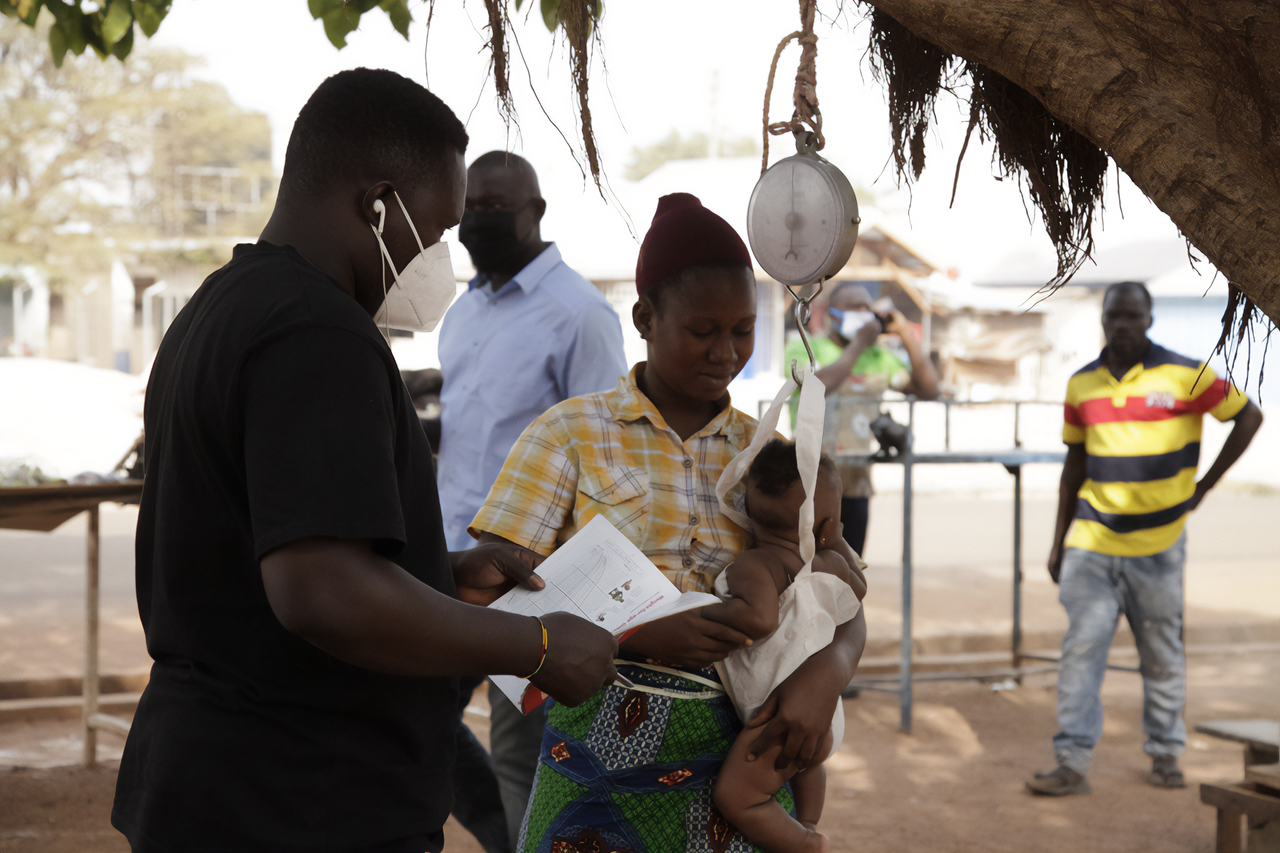
USAID Advancing Nutrition responded to the call to better integrate child growth and development (PDF 822 MB)) and tailor GMP to different contexts through a two-country case study in northern Ghana and Nepal. These studies were designed to understand how health facilities and outreach service points implement GMP in two different contexts and draw out important lessons for other countries. The project’s technical experts reviewed programmatic and peer-reviewed literature; interviewed national and subnational stakeholders, health workers, and caregivers; and observed GMP sessions at facility and outreach sites. These findings will be used to inform technical assistance and spark conversations about next steps for strengthening GMP.
Key Findings from Northern Ghana and Nepal
- GMP is an important platform for delivering core health and nutrition services and promoting child growth and development. Facility and community-based providers offer GMP with other key health and nutrition services such as immunization, vitamin A supplementation, and sick child care to maximize coverage. Caregivers want to know about their children’s growth and development.
- Health workers in both countries measured weight. For most children regularly measured, health workers used the growth trend (the growth pattern over time) for counseling. When children did not have regular measures, health workers could not identify growth faltering so instead focused their attention on children who were already malnourished based on their current weight or mid-upper arm circumference.
- Health workers in both countries used systematic procedures to record growth monitoring data through the District Health Information System (DHIS)2, where aggregate data recorded in registers are uploaded to a digital platform by health facility staff. All levels of government view data entered in DHIS2. Generally, data informs programming decisions such as allocation of resources. In comparison, growth promotion data are not tracked systematically.
- The quality of promotion, including tailored counseling based on the child growth trend, varied between the two countries and across study sites within countries. There is a lack of clarity around “promotion,” especially as distinguished from growth monitoring. Despite the ambiguity, health workers in both countries described some key elements of promotion (e.g., communicating results to parents, referring children for additional services, etc.). Health workers tailor counseling to the individual child and their growth trend where conditions permit; caregivers and children must attend regularly to establish a growth trend and health workers must have sufficient time to spend with each child. Tailored counseling efforts could continue to flourish with recognition of health worker strengths and adequate support.
Opportunities to Strengthen GMP Services
- Empower families through active engagement in their child’s growth and development to drive demand. Promote regular participation beyond when their child is sick or due for immunization. Caregivers in both contexts expressed a desire for more information on how their child is developing and how to play and interact with them.
- Develop growth charts designed to help the health worker interpret the growth trend rather than focusing only on the single-point-in-time nutritional status (normal or low weight-for-age).
- Lighten and streamline health worker workloads with task sharing mechanisms and decision logic job aids that help them focus on the children most at risk of malnutrition—those who are growth faltering—or facing developmental delays.
- Leverage ongoing home visits to follow up with children who are most at risk of malnutrition or developmental delays in addition to those already malnourished. Use home visits to understand the home environment, problem-solve context-specific issues, and engage family members.
- Regularly track and use growth data to mobilize community support for action, accountability, and resource allocation. Growth data can help health workers identify useful group counseling topics, decide which geographic areas need special attention, assess program reach, whether GMP attendance targets were met, and lobby for additional resources. For more detail on these findings, check out our country narrative summaries (Northern Ghana and Nepal) and manuscript contextualizing these findings based on critical points for strengthening GMP identified during the 2018 convening.
For more detail on these findings, check out our country narrative summaries (Northern Ghana and Nepal) and manuscript contextualizing these findings based on critical points for strengthening GMP identified during the 2018 convening.